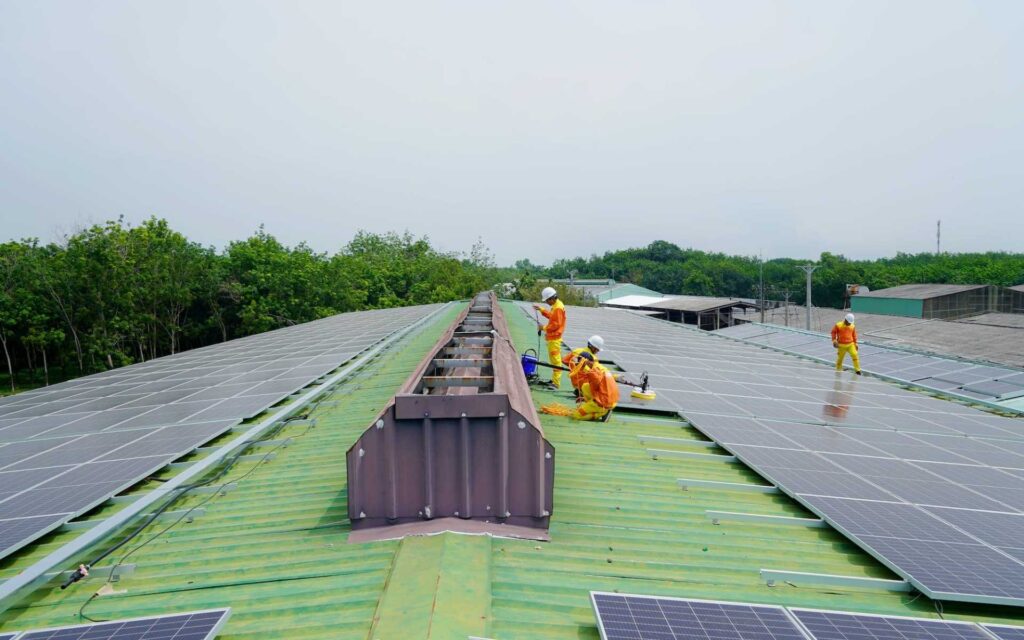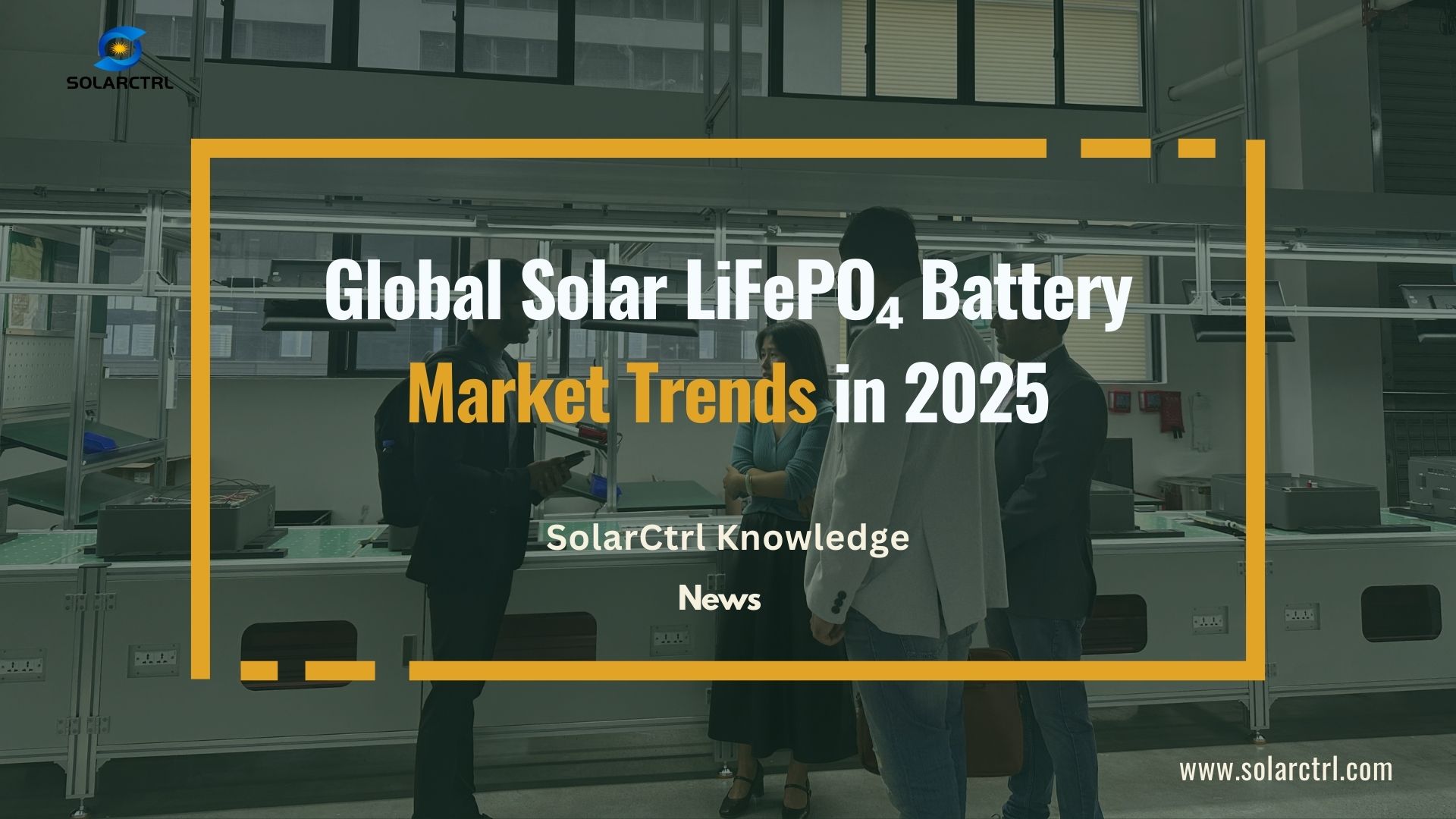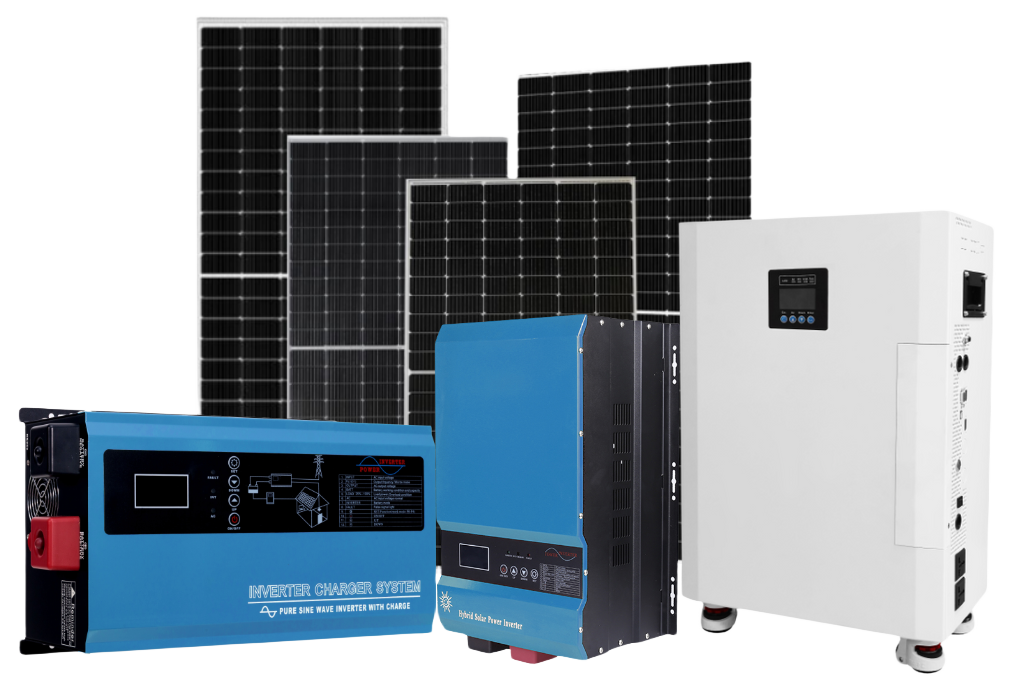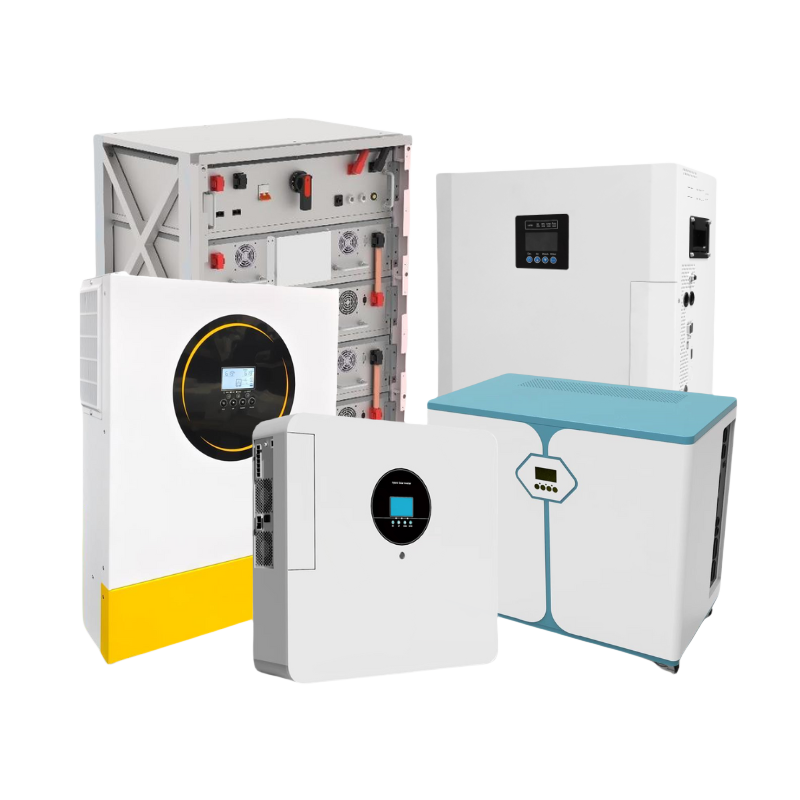Introduction
In the ever-evolving world of renewable energy, solar power stands out as a beacon of sustainable progress. Solar panels convert sunlight into electricity, providing a clean, green source of energy.
However, not all solar panels are created equal, and their ability to convert sunlight into electricity varies. This is where solar panel efficiency becomes a key factor.
In this comprehensive guide, we’ll dive deep into how to calculate solar panel efficiency, ensuring that you can make informed decisions about your solar energy investments.
Part 1: What is Solar Panel Efficiency?
Solar panel efficiency is a vital metric that fundamentally influences the performance and feasibility of solar energy systems, acting as a critical benchmark for assessing a solar panel’s proficiency in converting sunlight into electrical energy.
It is essentially the ratio of sunlight energy that a solar panel can convert into usable electricity relative to its size, highlighting the panel’s capacity to efficiently transform solar energy into electrical power. This efficiency is crucial as it directly determines the volume of electricity generated per unit area of the panel, thereby dictating the potential for more compact installations to produce equivalent energy outputs or achieving higher power yields from the same sized installations.
In essence, solar panel efficiency encapsulates the technological ability of a panel to harness sunlight and convert it into electricity, making it a pivotal factor in optimizing the utility and sustainability of solar installations by maximizing electricity generation within limited space constraints.

Part 2: Factors Affecting Solar Panel Efficiency
Understanding the factors influencing solar panel efficiency is crucial for optimizing the performance and output of solar energy systems. This efficiency is determined by a blend of material composition, environmental conditions, and the physical state of the panels, each playing a vital role in the energy conversion process.
2.1 Material Composition
The efficiency of solar panels is significantly impacted by their material composition.
Monocrystalline silicon panels, known for their high efficiency, leverage single-crystal silicon to offer superior performance, typically converting more sunlight into electricity compared to their polycrystalline and thin-film counterparts.
Polycrystalline silicon panels, made from multiple silicon crystals, offer a balance between cost and efficiency, making them a popular choice for residential installations.
Thin-film panels, while less efficient, provide unique advantages in flexibility and weight, making them suitable for a variety of applications where traditional panels might not be feasible.
2.2 Temperature Impact
Solar panels exhibit optimal performance within a specific temperature range. Exceeding these temperatures can lead to a decrease in efficiency, as the photovoltaic (PV) cells within the panels become less effective at converting sunlight into electrical energy.
This thermal effect underscores the importance of considering installation location and climate when assessing panel efficiency. Innovative cooling technologies and panel designs are being developed to mitigate the impact of high temperatures on solar panel efficiency.
2.3 Sunlight Exposure
The efficiency of solar panels is directly correlated with the amount of sunlight they receive. Factors such as shading from trees or buildings, the panel’s orientation, and the angle of installation can all affect the amount of sunlight captured by the panels.
Optimal placement and angle adjustment according to geographic location and seasonal variations can enhance sunlight exposure, thereby improving panel efficiency.
Advanced tracking systems that adjust the panels’ position throughout the day to follow the sun’s path can also significantly increase efficiency.
2.4 Aging and Degradation
Over time, solar panels experience natural degradation, leading to a gradual decline in efficiency. This degradation can be influenced by environmental factors such as exposure to UV light, temperature fluctuations, and physical wear from wind, rain, and snow.
Quality manufacturing and material selection can slow the rate of degradation, extending the lifespan and maintaining the efficiency of solar panels for longer periods.
Regular maintenance and inspections can also help identify and mitigate the effects of wear and tear, ensuring sustained performance.

Part 3: The Mathematical Formula for Calculating Efficiency
The formula for calculating the efficiency of a solar panel is relatively straightforward:

Let’s break this down:
- Output Power (Watts): This refers to the amount of electrical power produced by the solar panel under standard test conditions. The output power is a key indicator of a panel’s performance capabilities and is usually specified by the manufacturer.
- Input Power (Sunlight, in Watts per square meter): This parameter represents the power density of sunlight received by the panel. The standard assumption of 1000 W/㎡ is used for calculations to provide a consistent basis for comparison among different solar panels and technologies.
- Area (square meters): This is the physical size of the solar panel, calculated by multiplying its length by its width. The area is critical in understanding how much space is required to install a solar panel system and directly impacts the total output power based on the panel’s efficiency.
Part 4: Step-by-Step Calculation
Applying the mathematical formula for solar panel efficiency in practice involves a detailed approach to accurately evaluate a panel’s performance. Here’s an expanded step-by-step guide to calculating solar panel efficiency, enhancing clarity and practicality.
4.1 Determine the Output Power
The first step is to identify the electrical power output of your solar panel, usually listed in watts (W). This information can be found on the panel’s specification sheet provided by the manufacturer.
The output power is a crucial figure, representing the amount of electricity the panel can produce under standard testing conditions, typically involving sunlight intensity of 1000 W/㎡ and a cell temperature of 25°C (77°F).
4.2 Standardize the Input Power
For consistency and comparability among different solar panels, it’s essential to standardize the input power to a common benchmark. The industry standard for the intensity of sunlight falling on the panel is 1000 W/㎡, reflecting conditions of bright sunlight around noon on a clear day.
This standard condition allows for a uniform basis to evaluate and compare the efficiency of various solar panels.
4.3 Measure the Panel’s Area
Calculating the solar panel’s area in square meters (㎡) is vital for understanding how much space the panel will occupy and its efficiency calculation.
This measurement is obtained by multiplying the length and width of the panel, which are typically available in the panel’s datasheet.
The area directly influences the efficiency percentage, as it determines the size of the surface exposed to sunlight.
4.4 Plug into the Formula
With all the necessary data at hand, the next step is to insert these values into the efficiency formula:

This formula calculates the efficiency percentage by comparing the electrical power output of the panel to the power input from sunlight per square meter, standardized to 1000 W/㎡.
Example Calculation
Suppose you have a solar panel with an output power of 300 watts and dimensions of 1.6 meters by 1 meter, making the area 1.6×1=1.6 ㎡. The efficiency calculation would be:

This result indicates a hypothetical scenario as current solar panels on the market have efficiencies ranging typically from 15% to 22%.

Part 5: Maximizing Solar Panel Efficiency
Maximizing the efficiency of solar panels is pivotal to harnessing the optimal amount of solar energy and ensuring the long-term sustainability of solar installations. Beyond the basic considerations of placement, maintenance, and temperature regulation, a deeper understanding of how to enhance solar panel efficiency can significantly improve the performance of solar energy systems.
5.1 Optimal Placement and Orientation
Strategic Positioning: Beyond avoiding shading, the orientation and tilt of solar panels play a crucial role in maximizing sun exposure. Panels should ideally face the direction that receives the most sunlight throughout the year, which is typically south in the Northern Hemisphere.
Tilt Angle Optimization: The tilt angle of the panels should be adjusted according to the latitude of the location to capture the maximum solar radiation. Adjustable mounting systems can allow for seasonal repositioning, enhancing efficiency further.
Related Resource: Step By Step Guide For Solar Panel Installation (2023)
5.2 Regular Maintenance and Upkeep
Scheduled Cleanings: Solar panels accumulate dust, pollen, and other debris that can obstruct sunlight. Regular cleaning schedules ensure panels operate at peak efficiency.
Inspection and Repair: Periodic inspections can identify and rectify potential issues such as loose connections, damaged cells, or inverter problems, preventing efficiency losses.

5.3 Temperature Regulation Techniques
Cooling Systems: Implementing active cooling systems or passive ventilation can help maintain optimal operating temperatures, especially in hot climates.
Heat-Reflective Coatings: Applying heat-reflective coatings to the panel’s surface or the surrounding area can reduce temperature-induced efficiency losses.
5.4 Technological Enhancements
Microinverters: Utilizing microinverters instead of a central inverter can improve efficiency by optimizing the conversion process for each panel individually, mitigating the impact of shading or panel mismatch.
Bifacial Panels: These panels capture sunlight from both their front and back sides, increasing the overall energy production, especially in reflective environments.
Related Resource: What’s N-Type Technology And What Does It Mean For Solar?
Related Resource: The Latest Developments In Photovoltaic Panel Efficiency
5.5 System Monitoring and Optimization
Performance Monitoring: Advanced monitoring systems can track the performance of each panel, identifying underperformance due to shading, degradation, or malfunctions.
Software Optimization: Using software to dynamically adjust the load or the orientation of panels can lead to significant gains in efficiency.
Part 6: FAQ for Solar Panel Efficiency
Q1: How does weather affect solar panel efficiency?
Weather can impact solar panel efficiency; while they can still generate electricity on cloudy days, optimal performance is achieved under direct sunlight. Rain can help clean the panels, but snow and hail might temporarily reduce efficiency.
Q2: How do I know if my roof is suitable for solar panel installation?
A roof is suitable for solar installation if it has enough space, good exposure to sunlight, minimal shading, and is structurally sound to support the panels’ weight. An assessment by a professional can determine suitability.
Q3: Can I install solar panels on a non-traditional roof, such as a flat or metal roof?
Solar panels can be installed on various roof types, including flat and metal roofs, using specialized mounting systems to ensure stability and optimal orientation.
Q4: Can solar panels provide enough energy to power my entire home?
Solar panels can potentially provide enough energy to power an entire home, depending on the home’s energy consumption, the number of panels installed, and local sunlight conditions.
Q5: What maintenance is required to keep solar panels operating efficiently?
Maintenance for solar panels is generally low and includes regular cleaning to remove dirt and debris and periodic inspections to ensure all components are in good working order.
Q6: How does the angle of installation affect solar panel efficiency?
The installation angle can significantly affect solar panel efficiency. Ideally, panels should be tilted at an angle equal to the site’s latitude to maximize sunlight exposure throughout the year.
Q7: Are solar panels recyclable at the end of their lifespan?
Many solar panel components are recyclable, including the glass, metal framing, and silicon cells. The recycling infrastructure is growing as the industry focuses on sustainability and reducing waste.
Conclusion
Calculating solar panel efficiency is a vital step in evaluating the suitability of different solar panels for your specific energy requirements, enabling you to make well-informed decisions for your solar projects. However, efficiency is just one of several critical considerations. Factors such as cost, durability, and warranty terms are equally important in the selection process. By integrating these considerations, you can harness solar energy more effectively, contributing to a more sustainable and environmentally friendly future.
SolarCtrl is committed to providing state-of-the-art solar panels that combine high efficiency with durability and comprehensive warranty coverage, ensuring that our customers enjoy the best value and performance from their solar energy investments. Whether you’re embarking on a new solar project or looking to upgrade your existing system, SolarCtrl offers a range of solutions tailored to meet your energy needs.
Take action today and join the renewable energy revolution with SolarCtrl. Visit our website to explore our latest solar panel offerings and discover how we can help you achieve your solar energy goals. Together, we can pave the way for a cleaner, greener, and more sustainable future powered by solar energy.























